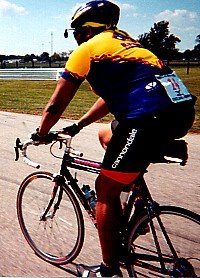29.November 1864...
Let us know peace.
For as long as the moon shall rise,
For as long as the rivers shall flow,
For as long as the sun shall shine,
For as long as the grass shall grow,
Let us know peace.
All My Relations,
--ryan
Native American Atrocities - The Sand Creek Massacre
Southern Cheyenne
November 29, 1864
Colorado Territory during the 1850's and 1860's was a place of phenomenal growth spurred by gold and silver rushes. Miners by the tens of thousands had elbowed their way into mineral fields, dislocating and angering the Cheyennes and Arapahos. The Pike's Peak Gold Rush in 1858 brought the the tension to a boiling point. Tribesmen attacked wagon trains, mining camps, and stagecoach lines during the Civil War, when the military garrisons out west were reduced by the war. One white family died within 20 miles of Denver. This outbreak of violence is sometimes referred to as the Cheyenne-Arapaho War or the Colorado War of 1864-65.
Governor John Evans of Colorado Territory sought to open up the Cheyenne and Arapaho hunting grounds to white development. The tribes, however, refused to sell their lands and settle on reservations. Evens decided to call out volunteer militiamen under Colonel John Chivington to quell the mounting violence.
Evans used isolated incidents of violence as a pretext to order troops into the field under the ambitious, Indian-hating territory military commander Colonel Chivington. Though John Chivington had once belonged to the clergy, his compassion for his fellow man didn't extend to the Indians.
In the spring of 1864, while the Civil War raged in the east, Chivington launched a campaign of violence against the Cheyenne and their allies, his troops attacking any and all Indians and razing their villages. The Cheyennes, joined by neighboring Arapahos, Sioux, Comanches, and Kiowas in both Colorado and Kansas, went on the defensive warpath.
Evans and Chivington reinforced their militia, raising the Third Colorado Calvary of short-term volunteers who referred to themselves as "Hundred Dazers". After a summer of scattered small raids and clashes, white and Indian representatives met at Camp Weld outside of Denver on September 28. No treaties were signed, but the Indians believed that by reporting and camping near army posts, they would be declaring peace and accepting sanctuary.
Black Kettle was a peace-seeking chief of a band of some 600 Southern Cheyennes and Arapahos that followed the buffalo along the Arkansas River of Colorado and Kansas. They reported to Fort Lyon and then camped on Sand Creek about 40 miles north.
Shortly afterward, Chivington led a force of about 700 men into Fort Lyon, and gave the garrison notice of his plans for an attack on the Indian encampment. Although he was informed that Black Kettle has already surrendered, Chivington pressed on with what he considered the perfect opportunity to further the cause for Indian extinction. On the morning of November 29, he led his troops, many of them drinking heavily, to Sand Creek and positioned them, along with their four howitzers, around the Indian village.
Black Kettle ever trusting raised both an American and a white flag of peace over his tepee. In response, Chivington raised his arm for the attack. Chivington wanted a victory, not prisoners, and so men, women and children were hunted down and shot.
With cannons and rifles pounding them, the Indians scattered in panic. Then the crazed soldiers charged and killed anything that moved. A few warriors managed to fight back to allow some of the tribe to escape across the stream, including Black Kettle.
The colonel was as thourough as he was heartless. An interpreter living in the village testified, "THEY WERE SCALPED, THEIR BRAINS KNOCKED OUT; THE MEN USED THEIR KNIVES, RIPPED OPEN WOMEN, CLUBBED LITTLE CHILDREN, KNOCKED THEM IN THE HEAD WITH THEIR RIFLE BUTTS, BEAT THEIR BRAINS OUT, MUTILATED THEIR BODIES IN EVERY SENSE OF THE WORD." By the end of the one-sided battle as many as 200 Indians, more than half women and children, had been killed and mutilated.
While the Sand Creek Massacre outraged easterners, it seemed to please many people in Colorado Territory. Chivington later appeared on a Denver stage where he regaled delighted audiences with his war stories and displayed 100 Indian scalps, including the pubic hairs of women.
Chivington was later denounced in a congressional investigation and forced to resign. When asked at the military inquiry why children had been killed, one of the soldiers quoted Chivington as saying, "NITS MAKE LICE." Yet the after-the-fact reprimand of the colonel meant nothing to the Indians.
As word of the massacre spread among them via refugees, Indians of the southern and northern plains stiffened in their resolve to resist white encroachment. An avenging wildfire swept the land and peace returned only after a quarter of a century.


0 Comments:
Post a Comment
<< Home